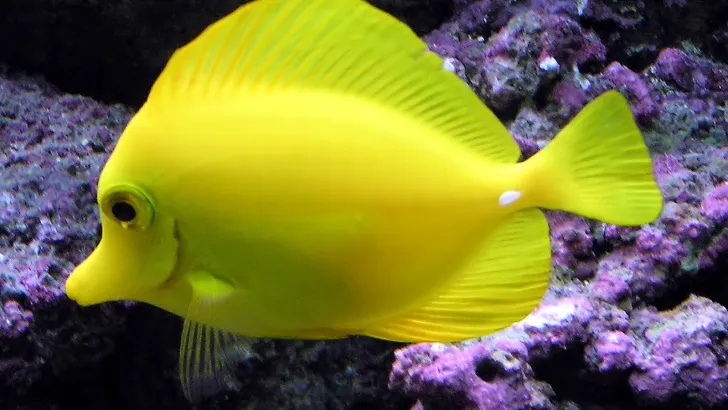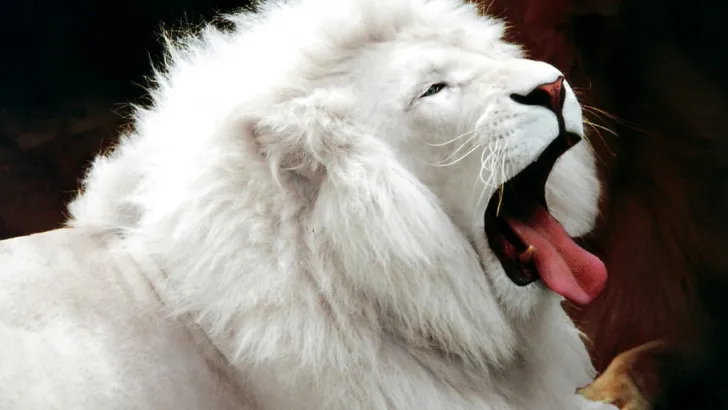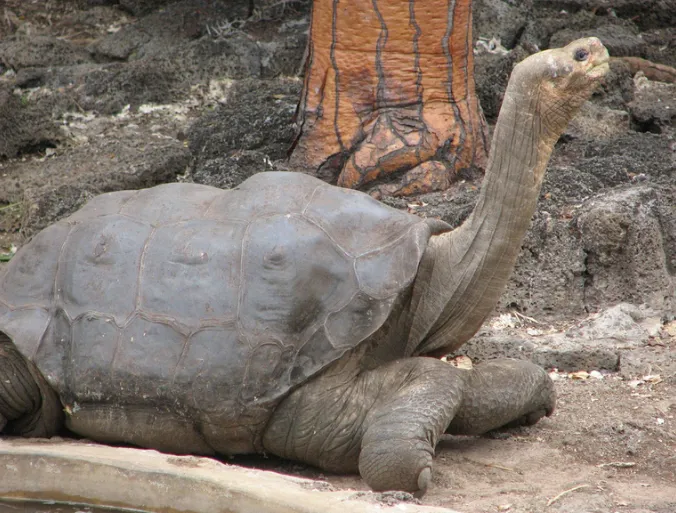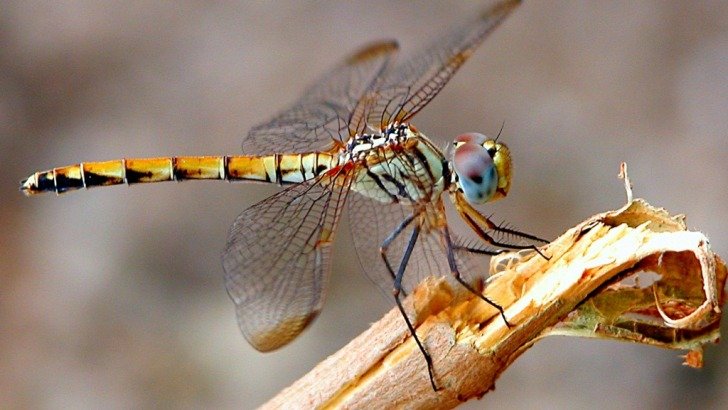Get ready to be amazed! Discover 5 jaw-dropping facts that will leave you in awe. Prepare to say, I can’t believe it!
Table of Contents
Hold onto your seats, folks, because we’re about to embark on a mind-boggling journey through the realm of the unbelievable!
Get ready to have your jaw drop and your mind blown as we uncover not one, not two, but FIVE jaw-dropping facts that will leave you simply flabbergasted.
From shocking discoveries in science to mind-bending feats of human achievement, these astonishing revelations will make you question everything you thought you knew.
So buckle up and prepare yourself for an adventure like no other trust me, you won’t want to miss this!

Grabbing your attention with unbelievable facts.
– Turritopsis dohrnii is a species of jellyfish that can live forever by reverting back to its juvenile stage.
– Cleopatra lived closer in time to the creation of Pizza Hut than to the construction of the Great Pyramid of Giza.
– In 1997, IBM’s Deep Blue computer defeated chess grandmaster Garry Kasparov, showcasing the power of artificial intelligence.
1. Did you know that there is a species of jellyfish that can live forever?

Meet Turritopsis dohrnii, also known as the immortal jellyfish.
This incredible creature has the remarkable ability to revert back to its juvenile stage after reaching maturity, effectively restarting its life cycle. Imagine being able to hit a reset button and start all over again!
While humans may not have this superpower (unfortunately), it’s hard not to be fascinated by this truly mind-boggling fact.
2. Brace yourself for another astonishing fact:

Cleopatra lived closer in time to the creation of Pizza Hut than she did to the construction of the Great Pyramid of Giza!
The last pharaoh of ancient Egypt had her reign from 51–30 BC, while Pizza Hut was established in 1958 just over 100 years ago.
This mind-bending comparison serves as a reminder of how our perception of historical events can sometimes be distorted, making it difficult to comprehend their true timelines.
3. Prepare for your jaw to drop once more:

In terms of brain power, a computer developed by IBM called Deep Blue outsmarted chess grandmaster Garry Kasparov in 1997!
This groundbreaking achievement demonstrated how artificial intelligence had advanced enough to defeat one of humanity’s finest minds in a complex game like chess.
It’s an astounding reminder that technology continues to evolve at an astounding pace, with possibilities and capabilities beyond our wildest imagination.

Fact 1: Mind-blowing discoveries in outer space.
– Pulsars are highly magnetized rotating neutron stars that emit beams of electromagnetic radiation
– Pulsars were discovered in 1967 by Jocelyn Bell Burnell and Antony Hewish
– Pulsars help in understanding gravity, extreme physics, and measuring interstellar distances
– The first-ever image of a supermassive black hole in galaxy M87 was captured in 2019
– The image was made possible by the Event Horizon Telescope and confirms Einstein’s theory
– NASA’s Kepler mission discovered the exoplanet Kepler-452b in 2016, which orbits its star
1. The vastness of outer space is truly mind-boggling, and so are the discoveries that scientists have made there.
One mind-blowing discovery is the existence of pulsars, which are highly magnetized rotating neutron stars that emit beams of electromagnetic radiation.
These pulsars, often compared to cosmic lighthouses, were first detected in 1967 by Jocelyn Bell Burnell and Antony Hewish.
They rotate incredibly fast, with some spinning hundreds or even thousands of times per second! Pulsars not only provide valuable insights into the workings of gravity and extreme physics but also help astronomers in measuring interstellar distances.
2. Another astonishing find in outer space is the recent confirmation of a black hole’s existence through direct imaging.
In 2019, an international team of researchers captured the first-ever image of a supermassive black hole located at the center of galaxy Messier 87 (M87).
This groundbreaking achievement was made possible by combining observations from eight radio telescopes around the world, creating an Earth-sized virtual telescope called Event Horizon Telescope (EHT).
The resulting image reveals a halo-like structure surrounding a dark void an awe-inspiring sight that confirms Einstein’s theory and deepens our understanding of these enigmatic cosmic entities.
3. Our exploration beyond our own solar system has also led to fascinating revelations.
In 2016, NASA’s Kepler mission discovered an exoplanet named Kepler-452b that orbits its star in what scientists call the habitable zone
Fact 2: Astonishing animal kingdom wonders.
– Sharks have the ability to detect electrical fields emitted by other creatures
– This is known as electroreception and helps sharks find prey in the dark
– Ants, like weaver ants, can build natural skyscrapers by weaving leaves together
– These structures can reach impressive heights and house many ants
– The animal kingdom is full of surprising and incredible creations and capabilities
– Sharks and ants are examples of the wonders that can be found in nature.
In the vast and diverse animal kingdom, there are wonders that will leave you in awe.
Take for instance the ability of sharks to detect electrical fields emitted by other creatures.
These ancient predators possess a sixth sense called electroreception, allowing them to find prey even in complete darkness.
By detecting the weak electrical signals produced by living organisms, sharks can navigate through intricate underwater environments with remarkable precision.
Moving from water to land, let’s dive into the intriguing world of ants.
These tiny insects are renowned for their strength and teamwork, but did you know that certain species are capable of building natural skyscrapers?
The weaver ant is a prime example of this architectural prowess.
They construct nests high up in trees by weaving together leaves using silk secreted by their larvae.
These intricate treetop structures can reach impressive heights, hosting countless ants who live harmoniously in their leafy abode.
Nature constantly surprises us with its astonishing creations and capabilities.
From the mysterious depths of the ocean to the mesmerizing intricacies of insect habitats, there is an endless array of wonders waiting to be discovered within our incredible animal kingdom.
So next time you encounter a shark or marvel at an ant hill, remember that these creatures exist as living testaments to the marvels and mysteries nature has hidden within its realms
Fact 3: Unbelievable feats of human achievement.
– Arunima Sinha became the first female amputee to climb Mount Everest despite losing her leg.
– Usain Bolt holds multiple sprinting records and won Olympic titles for three consecutive games.
– These achievements push the limits of human potential and inspire us to dream bigger.
One of the most fascinating aspects of human achievement is our ability to push the limits and accomplish incredible feats.
Take, for example, the story of Arunima Sinha. In 2011, she became the first female amputee to climb Mount Everest.
Despite losing her leg in a tragic train accident just two years prior, Sinha defied all odds and conquered one of the world’s most formidable peaks.
Her determination and resilience serve as a testament to the indomitable spirit of human beings.
Another mind-boggling triumph is that of Usain Bolt, widely regarded as one of the greatest sprinters in history.
Bolt holds multiple records, including being the only person to have won both Olympic titles in 100 meters and 200 meters for three consecutive games (2008, 2012, and 2016).
Not only did he consistently shatter records on the track with his lightning speed, but he did so effortlessly with his signature showmanship.
Bolt’s extraordinary abilities make us question just how far our bodies can be pushed and what other unimaginable accomplishments lie ahead for humanity.
These unbelievable feats remind us that there are truly no limits when it comes to human potential.
Whether it’s defying physical obstacles or surpassing athletic milestones, these individuals inspire us to dream bigger and strive harder.
As we witness these extraordinary achievements unfold before our eyes, we can’t help but marvel at what humans are capable of accomplishing when they set their minds on achieving the seemingly impossible
Fact 4: Surprising historical events that defy belief.
– In 1908, a massive explosion occurred in Tunguska, Siberia, with no evidence of a meteorite or asteroid impact.
– The cause of the explosion remains a mystery, with theories including a black hole or alien spacecraft.
– During World War II, Operation Mincemeat involved planting a fake corpse with false documents to deceive German forces.
– The operation successfully diverted German attention and led to Allied victory in Sicily.
– These events challenge our understanding of reality and remind us that truth can be stranger than fiction.

Historical events are often shrouded in mystery and intrigue, but some go beyond conventional narratives and enter the realm of sheer disbelief.
One such event occurred in 1908 when a massive explosion rocked the remote region of Tunguska, Siberia.
The force of the blast was estimated to be equivalent to over 1,000 Hiroshima bombs, yet there was no evidence of any impact from a meteorite or asteroid.
To this day, scientists are baffled by what caused the explosion, with theories ranging from a black hole passing through Earth’s atmosphere to alien spacecraft gone awry.
Another mind-boggling historical event unfolded during World War II when British intelligence agents hatched an audacious plan known as Operation Mincemeat.
In order to deceive German forces about their intended landing site for an upcoming invasion, the British planted a fake corpse carrying false documents off the coast of Spain.
This elaborate ruse successfully diverted German attention away from Sicily and towards Greece, ultimately leading to Allied victory in that crucial campaign.
The daring nature of Operation Mincemeat challenged traditional notions of espionage and demonstrated just how far nations were willing to go in pursuit of victory.
These surprising historical events not only defy belief but also challenge our understanding of reality itself.
From unexplained explosions to audacious wartime deceptions, these stories serve as reminders that truth can indeed be stranger than fiction.
As we delve deeper into history’s secrets, it becomes clear that there is always more beneath the surface waiting to
Fact 5: Jaw-dropping natural phenomena around the world.
– Nature is full of jaw-dropping natural phenomena that will leave you in awe
– Bioluminescent plankton on Vaadhoo Island creates a shimmering blue sea lit up by tiny stars
– Lake Maracaibo in Venezuela has the most lightning strikes per square kilometer annually
– Mother Nature has countless other surprises like fire rainbows and pink lakes.

If you thought nature couldn’t get any more mind-boggling, think again! From surreal glowing waves to fiery tornadoes, the world is full of jaw-dropping natural phenomena that will leave you in awe.
Take a trip to the Maldives’ Vaadhoo Island, and you might just witness one of the most incredible sights on Earth: bioluminescent plankton creating a shimmering blue sea that appears as if it’s lit up by millions of tiny stars.
This mesmerizing phenomenon occurs due to a chemical reaction produced by these microorganisms, and seeing the beach come alive with bioluminescence is nothing short of magical.
Another jaw-dropping spectacle takes place in Lake Maracaibo in Venezuela.
This location holds the Guinness World Record for having the most lightning strikes per square kilometer annually.
Aptly named The Beacon of Maracaibo, this fascinating natural lightshow can be seen for over 200 nights each year, earning it another nickname – The Everlasting Storm.
It’s as if Zeus himself has taken residence over Lake Maracaibo, frequently illuminating the sky with powerful bolts of lightning that dance across the horizon.
Aside from these stunning examples, Mother Nature has countless other surprises waiting around every corner.
Whether it’s mysterious fire rainbows or vibrant pink lakes, our planet never fails to amaze us with its penchant for dramatic displays.
So next time you find yourself standing beneath an iridescent sky or stumbling upon an ethereal landscape sculpted by nature

incredible facts
– Oldest living organism: Methuselah, a bristlecone pine tree in California, estimated to be over 4,800 years old
– Methuselah has survived storms, fires, and witnessed the rise and fall of civilizations
– The Immortal Jellyfish can revert back to its juvenile state after reaching maturity, essentially immortal
– Offers a glimpse into potential indefinite life spans in certain organisms
– Nature is full of mysteries waiting to be unraveled – Challenges our understanding and invites us to marvel at nature’s diversity and resilience

Did you know that the world’s oldest known living organism is a tree called Methuselah?
This ancient bristlecone pine, located in the White Mountains of California, is estimated to be over 4,800 years old!
It has witnessed the rise and fall of civilizations, survived countless storms and fires, and continues to thrive in its rugged environment. Just imagining the stories it could tell makes you appreciate the resilience of nature.
Speaking of remarkable longevity, have you ever heard about The Immortal Jellyfish?
Also known as Turritopsis dohrnii, this jellyfish has a unique ability to revert back to its juvenile state after reaching maturity.
Essentially immortal, it can continuously cycle between adult and polyp stages indefinitely.
While human immortality remains elusive, this tiny creature offers a fascinating glimpse into the potential for indefinite life spans in certain organisms.
These mind-blowing facts remind us that there are still so many mysteries waiting to be unraveled in our awe-inspiring world.
From ancient trees with centuries worth of wisdom to creatures defying conventional lifespan limits – each discovery challenges our understanding and invites us to marvel at nature’s incredible diversity and resilience.
So next time you find yourself in nature or exploring new realms of knowledge, take a moment to appreciate just how unbelievable our planet truly is- full of secrets waiting patiently for us to uncover them.
What are the most incredible facts?
– The world’s largest living organism is a fungus in Oregon, spanning 2.4 miles.
– The Odessa Catacombs in Ukraine stretch for 1,500 miles and have a rich history.
– Ice Fingers near Mount Erebus in Antarctica are formed when volcanic steam freezes in ice caves.
1. Did you know that the world’s largest living organism is not a blue whale or a dinosaur, but actually a fungus?
Spanning an astonishing 2.4 miles in length, located in the Malheur National Forest in Oregon, this enormous Armillaria ostoyae fungus has been growing for over 2,400 years!
It may be surprising to think of a fungus as an incredible living organism, but this mind-boggling fact reminds us of the diverse and awe-inspiring wonders that exist all around us.
2. Another jaw-dropping fact lies buried deep beneath our feet — and it’s not oil or diamonds.
In the vast network of tunnels beneath Ukraine sits the Odessa Catacombs, stretching for an astounding 1,500 miles!
Created from limestone mining in the early 19th century and later used by smugglers and partisans during World War II, these catacombs are now a labyrinthine maze full of mystery.
Exploring them without a guide is dangerous due to their complexity, but they offer an extraordinary glimpse into history with hidden rooms and even underground rivers.
3. Speaking of hidden gems on Earth, have you ever heard about Ice Fingers?
Located near Mount Erebus in Antarctica, this unusual natural phenomenon occurs when volcanic steam escapes through cracks in ice caves formed by glaciers meeting solid ground.
The steam freezes instantly upon contact with cold air creating stunning formations called fumaroles. These ice fingers can reach up to 15 feet long and
What are 5 interesting facts?
– The Great Wall of China cannot be seen from space
– Flamingos stand on one leg to conserve body heat
– Cats can always land on their feet due to their flexible spines and acute sense of balance
Fact 1: Did you know that the Great Wall of China can be seen from space?
It’s a common misconception, but astronauts cannot actually see the wall from orbit.
The width and height of the wall are simply too small to be visible at that distance.
However, this doesn’t take away from the impressive feat of human engineering that is the Great
Wall. Stretching over 13,000 miles and built over several dynasties, it remains one of the most iconic and remarkable structures in human history.
Fact 2: Have you ever wondered why flamingos stand on one leg?
While it may seem like a bizarre behavior, scientists have discovered an interesting reason behind this phenomenon.
Flamingos often live in warm, shallow waters where they feed on aquatic plants.
By standing on one leg, they can conserve body heat more efficiently as less surface area comes into contact with the water.
This adaptation helps them stay warm while balancing and navigating their environments with ease.
Fact 3: Speaking of balance, did you know that cats always land on their feet?
This incredible ability is due to a combination of their flexible spines and acute sense of balance.
When falling, cats can quickly twist their bodies mid-air to face downwards and use their powerful muscles to ensure a safe landing.
Additionally, they have a unique inner ear structure that enables them to detect changes in position accurately.
So next time you see your cat jump off something high up without hesitation – remember how truly extraordinary these feline acrob

What are 3 unique facts?
– Honey never spoils due to its low moisture content and high acidity.
– White chocolate does not contain cocoa solids, unlike milk or dark chocolate.
– Lightning can strike multiple times per minute in certain areas.
– Arenal Volcano in Costa Rica is known for frequent lightning shows during thunderstorms.
1. Did you know that honey never spoils? Yes, that’s right!
Archaeologists have actually found pots of honey in ancient Egyptian tombs that are over 3,000 years old and still perfectly edible.
This is due to the fact that honey has a low moisture content and high acidity, creating an inhospitable environment for bacteria and other microorganisms.
So next time you reach for a jar of honey, remember that it’s not only delicious but also essentially immortal!
2. While we’re on the topic of food, let’s talk about chocolate. Did you know that white chocolate isn’t really chocolate at all?
Unlike its rich and flavorful counterparts like milk or dark chocolate, white chocolate does not contain cocoa solids which give regular chocolate its distinct taste.
Instead, it’s primarily made up of cocoa butter (the fatty component extracted from cocoa beans) along with sugar and milk solids.
So if you’re a die-hard chocoholic looking for an authentic cocoa experience, stick to the dark side!
3. Brace yourself for another mind-blowing fact – lightning can strike twice (or even more!).
Contrary to what we may think about lightning being a rare occurrence, there are certain places around the world where storms produce lightning strikes multiple times per minute!
The Arenal Volcano in Costa Rica is one such example where lightning shows are a common sight during nighttime thunderstorms. So if you find yourself in an area prone to frequent electrical storms, perhaps it’s
Can you tell me a scary fact?
– Humans have an innate ability to detect danger even without visible cues
– This ability is called intuition and is our body’s way of protecting us from harm
– Humans are hardwired to feel like they are being watched when they can’t see who is behind them
– Our brains are constantly on high alert for potential threats lurking in our blind spots
– Trusting our instincts in spooky situations can potentially save our lives
Picture this: it’s a quiet night, and you’re all alone in your room. Suddenly, you hear a faint tapping on your window.
You take a peek, only to find nobody there; just the sound of crickets and the distant hum of the city.
As you turn away from the window, an eerie chill creeps up your spine.
What if I told you that this feeling is not just in your head?
Studies have shown that humans have an innate ability to detect danger even without visible cues.
It’s called intuition, and it’s our body’s way of protecting us from harm.
But here’s where it gets really scary – imagine being followed by something or someone unknown while walking down a deserted street at night.
Your heart races as you quicken your pace, desperately trying to shake off the feeling of being watched.
Well, brace yourself because scientists have discovered that humans are actually hardwired to feel like they are being watched when they can’t see who is behind them.
It turns out our brains are constantly on high alert for potential threats lurking in our blind spots.
So next time you get spooked by strange noises or that hair-raising feeling someone is watching you, trust your instincts because they might just save your life!

What is a rare fact?
– Lonesome George, the last surviving Pinta Island tortoise, lived for over 100 years.
– Despite efforts to find him a mate, Lonesome George remained the only one of his kind.
– Ants possess incredible strength relative to their size, capable of carrying objects up to fifty times their own weight.
– This strength comes from their disproportionately strong muscles.
– These rare facts remind us of the wonders and unique phenomena in our world.
One rare fact that will leave you amazed is about the Pinta Island tortoise, also known as Lonesome George.
Lonesome George was the last surviving Pinta Island tortoise and considered one of the rarest animals on Earth.

He lived for over 100 years and was discovered in 1971 by a conservationist searching for these nearly extinct creatures.
Despite efforts to find him a mate to save his species, Lonesome George remained the only one of his kind until he passed away in 2012.
This heartbreaking rarity serves as a reminder of the devastating impact human activity can have on our planet’s biodiversity.
Another astonishing yet less-known fact revolves around ants and their impressive strength.
While ants may seem tiny compared to us, they possess incredible power relative to their size.
In fact, some ant species are capable of carrying objects up to fifty times their own weight!
This extraordinary ability comes from their disproportionately strong muscles, enabling them to move objects that would be impossible for creatures larger than them.
It’s truly remarkable how nature has equipped ants with such incredible strength and efficiency in performing tasks essential for their survival.
These rare facts remind us that our world is full of awe-inspiring wonders and unique phenomena waiting to be discovered.
From the plight of endangered species like Lonesome George to the exceptional capabilities found among seemingly insignificant creatures like ants, there’s always something fascinating just waiting to be uncovered beneath the surface of what we think we know about our planet’s diversity and complexity.
What are the 7 unbelievable things in world?
– Northern Lights: Vibrant colors in the night sky caused by solar winds colliding with Earth’s magnetic field
– Great Barrier Reef: Massive coral formations and diverse marine life visible even from space
– Amazon Rainforest: World’s largest tropical rainforest with diverse wildlife and lush vegetation
– Taj Mahal: Marvelous architectural gem in Agra, India honoring Emperor Shah Jahan’s late wife
– Great Wall of China: Colossal structure spanning over 21,000 kilometers, showcasing human ambition
– Victoria Falls: Thunderous waterfall on Zambia-Zimbabwe border, over 1,700 meters wide and 100 meters tall.
1. The Northern Lights: Witness the stunning dance of vibrant colors across the night sky as solar winds collide with Earth’s magnetic field near the polar regions. This enchanting light display is a true masterpiece of nature.
2. The Great Barrier Reef: Dive into a world teeming with an array of marine life and vibrant coral formations stretching over 2,300 kilometers off the coast of Australia. This underwater wonderland is home to countless species and is visible even from space!
3. The Amazon Rainforest: Explore the world’s largest tropical rainforest, spanning over 7 million square kilometers across South America. Enveloped by lush vegetation and filled with diverse wildlife, this incredible ecosystem breathes life into our planet.
4. The Taj Mahal: Marvel at this architectural gem nestled in Agra, India. Built in the 17th century by Emperor Shah Jahan as a tribute to his late wife, its intricate marble design and breathtaking symmetry make it one of the Seven Wonders of the World.
5. The Great Wall of China: Embark on a journey along this colossal structure snaking through mountains and valleys for over 21,000 kilometers. Dating back more than 2,000 years, this ancient marvel stands as a testament to human ambition and dedication.
6. Victoria Falls: Prepare to be thunderstruck by one of Mother Nature’s most impressive waterfalls located on the border between Zambia and Zimbabwe. With a width of over 1,700 meters and a height of more than 100 meters, these cascades boast immense power and beauty.
7. Machu Picchu: Ascend to new heights as you explore these mysterious ruins perched high above the Sacred Valley in Peru. This ancient Incan city, hidden amidst the Andean
Jaw-dropping facts
– Human bodies contain enough iron to make a tiny nail
– Iron is essential for transporting oxygen and producing energy in our bodies
– There are more stars in the universe than grains of sand on Earth’s beaches
– The vastness of the universe is awe-inspiring
– Honey never spoils due to its high sugar content, low moisture levels, and acidity
– These facts remind us of the remarkable and mysterious nature of our world.
Did you know that the average human body contains enough iron to make a tiny nail?
It’s hard to comprehend, but it’s true! Iron is an essential mineral that plays a crucial role in our bodies, helping to transport oxygen and produce energy.
So next time you’re feeling low on energy, just think about how your body could potentially build a mini nail!
Another mind-boggling fact is that there are more stars in the universe than grains of sand on all the beaches here on Earth.
Wrap your head around that for a moment. The sheer vastness of our universe is truly awe-inspiring.
Just imagine each grain of sand representing an entire galaxy with billions of stars – it’s incredible to contemplate the magnitude of what lies beyond our planet.
And we can’t forget about the astonishing fact that honey never spoils.
Archaeologists have discovered pots of perfectly edible honey in ancient Egyptian tombs dating back thousands of years!
This raises the question: what makes honey so special?

Turns out, its high sugar content, low moisture levels, and acidity create an environment inhospitable to bacteria and other microorganisms.
So whether it’s been sitting on your pantry shelf for months or buried beneath desert sands for centuries, honey remains forever unspoiled.
These jaw-dropping facts serve as reminders of just how remarkable and mysterious our world truly is.
From miniature nails made up by humans’ iron levels to galaxies outnumbering grains of sand on Earth and eternal properties possessed by honey- it’s clear
Jaw-dropping facts humans
– Humans are the only species capable of shedding emotional tears
– Humans share 60% of their DNA with bananas
– Human fingerprints are unique and can be used for identification, even for identical twins
1. Did you know that humans are the only species on Earth capable of shedding tears as an emotional response?
While some animals display tear-like secretions, true emotional tears are unique to humans.
This fascinating ability is thought to have evolved as a way for our ancestors to communicate distress or build social connections with others.
So, the next time you find yourself choked up during a heartwarming movie scene, remember that this display of emotion is one of the many things that sets us apart from the rest of the animal kingdom.
2. It may come as a surprise, but humans share around 60% of their DNA with bananas!
Yes, you read that correctly—bananas. Our genetic resemblance to these tropical fruits lies in our common ancestry and evolution over millions of years.
This astonishing fact not only highlights the interconnectedness between all living organisms but also reminds us how even seemingly unrelated things can be intricately linked at a biological level.
So, perhaps enjoying a banana could bring about a whole new perspective on our place in nature!
3. Have you ever stopped to marvel at the complexity and precision behind human fingerprints?
Each person’s pattern is entirely unique—so much so that it serves as a foolproof method for identifying individuals in forensic investigations worldwide.
But did you know that even identical twins have distinct fingerprints?
While they may share similar genetic makeup, environmental factors play a significant role in shaping different patterns during early development in utero.
The sheer uniqueness and individuality imparted by our fingerprints remind
What are 5 interesting facts about humans?
– Humans have superhuman strength in their jaw muscles, able to exert a force of 200 pounds when biting down.
– Humans have approximately 86 billion neurons in their brains, allowing for complex tasks and processing of a large amount of information.
– The average human blink lasts only 300-400 milliseconds, faster than the blink of an eye.
– No two fingerprints are identical, making them a unique identifier for forensic scientists.
– Fingerprints start developing on unborn babies as early as three months into pregnancy.
– Humans have the ability to distinguish between approximately one trillion different smells.

Get ready to have your mind blown with these jaw-dropping facts about humans!
1. Superhuman Strength:
Believe it or not, humans possess astonishing power! The impressive strength of our jaw muscles allows us to exert a force equivalent to 200 pounds when biting down.
This incredible ability is what gives us the powerful bite needed to chew tough foods.
2. Brain Power:
Prepare to be amazed by the sheer potential of our brains! Humans have approximately 86 billion neurons in our brains, enabling us to process an enormous amount of information and fluidly coordinate complex tasks.
3. Blink and You’ll Miss It:
Did you know that the average human blink lasts only about 300-400 milliseconds? That’s faster than the blink of an eye, literally!
4. Unique Fingerprints:
No two fingerprints are identical, making them an exceptional identifier for forensic scientists.
Even more astonishing is that these swirls and ridges start developing on unborn babies as early as three months into pregnancy!
5. A Nose for Scents:
Get ready for a scent-sational fact! Our sense of smell is far more formidable than we often think.
In fact, scientists estimate that humans can distinguish between approximately one trillion different smells — talk about a superpower!
So, whether it’s our extraordinary strength, brain power capable of incredible feats, lightning-fast blinks, unique fingerprints from birth, or an unrivaled sense of smell; humans continue to amaze with their fascinating capabilities!
What is the most amazing thing about the human body?
– The human body has the ability to heal itself through cell regeneration –
The body has intricate mechanisms that work together for healing and recovery
– The human body is adaptable and constantly adjusts to different environments and situations
– Adaptability helps humans survive and thrive in new environments
– The ability to heal and adapt are impressive features of the human body

The human body is an incredibly complex and fascinating machine that never ceases to amaze.
Among its many astonishing qualities, one of the most incredible things about the human body is its ability to heal itself.
When we get a cut or a broken bone, our bodies have the remarkable capacity to repair and regenerate cells to heal the injury.
This innate healing process involves countless intricate mechanisms that work together seamlessly, allowing us to recover from injuries and illnesses.
Another mind-blowing feature of the human body is its adaptability.
Our bodies are constantly adapting and adjusting to different environments and situations in order to survive.
From acclimating to changing temperatures by shivering or sweating, to growing thicker skin on our feet when walking barefoot regularly, our bodies are always working behind the scenes to ensure our well-being.
This adaptability not only helps us survive challenging circumstances but also allows us to thrive in new environments, making humans one of the most adaptable species on Earth.
In conclusion, while there are countless amazing aspects of the human body, its ability to heal itself and its remarkable adaptability stand out as some of the most astounding features.
From fixing injuries through cell regeneration to adjusting for survival in new environments, our bodies continually demonstrate their awe-inspiring capabilities.
Taking a moment to appreciate these incredible qualities can serve as a reminder of just how extraordinary it truly is
What’s the coolest thing a human can do?
– Humans can adapt and thrive in any environment, showcasing resilience and determination as a species
– Humans have a creative prowess in expressing emotions and thoughts through various art forms
– Humans possess the remarkable ability to understand and share the feelings of others, enabling deep connections and driving positive change.
While there are countless impressive feats that humans are capable of, one that truly stands out is our ability to adapt and thrive in any environment.
From the freezing tundras of Antarctica to the scorching deserts of Africa, humans have not only survived but also thrived in extreme conditions.
This unparalleled adaptability showcases our incredible resilience and determination as a species.
Another mind-blowing capability of humans is their creative prowess.
From painting masterpieces to composing symphonies, humans have an innate ability to express their emotions and thoughts through various art forms.
These creations have the power to evoke deep emotions within us, transporting us into different worlds and allowing us to experience and understand perspectives outside our own.
But perhaps one of the most mesmerizing things about being human is our capacity for empathy and compassion.
Unlike any other species on Earth, humans possess the remarkable ability to understand and share the feelings of others.
This innate sense of empathy enables us to form deep connections with one another, offer support in times of need, and drive positive change in the world around us.
In conclusion, while there are many awe-inspiring things that humans can do, it is our ability to adapt and thrive in any environment, our creative prowess, and our capacity for empathy that truly make us extraordinary beings.
These qualities set us apart from all other creatures on Earth and continue to shape both individual lives as well as society as a whole.

Jaw-dropping facts funny
– It’s physically impossible to lick your elbow
– Saying bless you when someone sneezes dates back to ancient times
– Honey never spoils and can last for thousands of years
Fact 1: Did you know that it’s physically impossible to lick your elbow?
Go ahead, try it! No matter how hard you contort your body or stretch your tongue, your elbow will always remain just out of reach.
This strange fact has baffled people for centuries and has become a popular challenge among friends and family.
So the next time someone asks you if you can lick your elbow, laugh it off and tell them it’s simply not possible!
Fact 2: Have you ever wondered why we say bless you when someone sneezes?
Well, funny enough, this saying dates back to ancient times when people believed that sneezing could expel evil spirits from the body.
Saying bless you was a way to protect the person from these malevolent beings.
While many of us still use this phrase out of habit today, it’s interesting to think about its superstitious origins and how something as common as sneezing once had deep supernatural implications.
Fact 3: Did you know that honey never spoils?
Archaeologists have discovered pots of honey in ancient Egyptian tombs that are over 3,000 years old, yet they’re still perfectly edible!
Honey is highly acidic with low moisture content, making it an inhospitable environment for bacteria and other microorganisms to survive.
With its long shelf life and delicious natural sweetness, honey truly is nature’s magical golden elixir.
These jaw-dropping facts not only challenge our assumptions but
What are unbelievable fun facts?
– Blood Falls is a crimson-colored waterfall in Antarctica’s Taylor Valley
– Water originates from a subglacial lake beneath Taylor Glacier
– Immortal jellyfish can revert back to their juvenile stage after reaching maturity
– Turritopsis dohrnii has the potential to live forever if it avoids disease or predation
– Bullfrogs remain fully alert during their dormancy period instead of entering deep sleep like other animals
1. Did you know that there is a waterfall in Antarctica?
Yes, you read that right! In Taylor Valley, one of the coldest and driest places on Earth, you can find Blood Falls.
This crimson-colored waterfall gets its name from the iron-rich water that gives it its distinctive hue.
Scientists believe that the water originates from a subglacial lake beneath Taylor Glacier and flows out through a crack in the ice, creating this breathtaking sight.
It’s truly mind-boggling to think about finding such vibrant beauty amidst the icy desolation of Antarctica.
2. Have you ever heard of immortal jellyfish?
These incredible creatures have baffled scientists with their unique ability to revert back to their juvenile stage after reaching maturity.
When faced with stress or injury, they transform themselves into polyps and start their lifecycle all over again.
This extraordinary adaptation means that Turritopsis dohrnii has the potential to live forever if it avoids disease or predation.
Imagine having eternal youth like these jellyfish! It’s hard to believe such a phenomenon exists right here on our planet.
3 (Optional). Amongst all of nature’s wonders, how about an animal that literally never sleeps?
Meet the bullfrog, which remains fully alert during its dormancy period – known as brumation – instead of entering deep sleep like other animals do during hibernation or estivation.
This means it can respond rapidly to threats or predators even in frigid temperatures when most creatures are slow-moving or completely inactive
What are 7 some jaw-dropping facts?
– Burj Khalifa in Dubai is the world’s tallest building at 828 meters
– The Amazon rainforest is home to pink dolphins
– The Great Barrier Reef in Australia can be seen from outer space
– The average person speaks around 16,000 words per day
– When two tornadoes collide, they form twin tornadoes
– Milky Rain is a phenomenon where milk-like substances fall from the sky
– There are more stars in the universe than grains of sand on Earth.
Get ready to have your mind blown by these jaw-dropping facts! Brace yourself for an exciting ride through the realm of remarkable knowledge.
1. Did you know that the world’s tallest building, Burj Khalifa in Dubai, reaches a staggering height of 828 meters? Imagine standing at its observation deck and being amazed by the breathtaking panoramic view!
2. Deep within the Amazon rainforest hides a creature that seems too extraordinary to be real: the Pink Dolphin. These enchanting creatures are not only intelligent but also possess a rare pink hue, leaving anyone fortunate enough to spot one in awe.
3. Prepare to be amazed by nature’s artistic abilities! The Great Barrier Reef, located off Australia’s coast, is so large that it can be seen from outer space. Its vibrant colors and diverse marine life create an underwater paradise like no other on Earth.
4. Ever wondered how many words the average person speaks per day? Brace yourself for this astonishing fact: on average, we utter around 16,000 words every single day! That amounts to approximately eleven words per minute.
5. Get ready for an out-of-this-world experience! When two tornadoes collide, they form what is known as a twin tornado or sisters tornado. Witnessing this extraordinary phenomenon would surely leave anyone breathless.
6. Have you ever heard of Milky Rain? It might sound puzzling, but it has been documented that in certain parts of the world during specific weather conditions tiny particles of milk-like substances fall from the sky, resembling rainfall made up of dairy products!
7. Zooming out into space now – did you know that there are more stars in our universe than grains of sand on all the beaches across planet Earth combined?
Wrap your head around this cosmic reality and let your imagination soar among billions upon billions of twinkling stars.
These mind-blowing facts only scratch the surface when it comes to the wonders this world has to offer. So dive into the realm of
What are 8 facts about cats?
– Cats have incredible night vision, allowing them to see in almost total darkness.
– They have supersonic hearing and can pick up ultrasonic sounds.
– Cat paw prints are unique and can be used to identify individual cats.
– Whiskers serve as sensors, helping cats determine if they can fit through tight spaces.
– Cats can jump up to five times their own height.
– They have exceptional agility and can navigate narrow gaps and land safely from great heights.
– Cat ears are stereophonic, allowing them to locate the source of sounds accurately.

Are you ready to be amazed by these jaw-dropping facts about our feline friends? Prepare to have your mind blown with these 10 incredible tidbits about cats!
1. Incredible Night Vision: Cats possess a mesmerizing ability to see in almost total darkness! Their eyes contain specialized cells that reflect light and enhance their vision, allowing them to hunt and navigate even in the darkest corners.
2. Supersonic Hearing: It’s no secret that cats have impressive hearing, but did you know they can hear ultrasonic sounds too? Their ears can pick up frequencies of up to 65,000 Hz, far beyond what humans can detect.
3. Pawsitively Unique Prints: Similar to how fingerprints are unique to each human, cat paw prints also bear distinct patterns. These one-of-a-kind paw marks enable researchers and animal rescue organizations to identify individual cats.
4. Whiskers for Precision: Those long whiskers on a cat’s face serve a purpose beyond their adorable appearance. Acting as built-in sensors, whiskers help cats determine if they can fit through tight spaces or alert them of incoming obstacles.
5. Gravity-Defying Jumps: Cats are renowned for their ability to leap with grace and precision. Thanks to powerful leg muscles and a highly flexible spine, these acrobatic creatures can jump an astonishing five times their own height in just one bound!
6. Olympic-Level Agility: If there were an agility competition for domestic animals, cats would steal the show! With exceptional balance and keen reflexes, they can effortlessly squeeze through narrow gaps or land safely from seemingly impossible heights.
7. Stereophonic Ears: A cat’s ears are uniquely designed not only for pinpoint hearing but also for determining sound directionality more accurately than humans or even most other animals.
8. Ancient Egyptian Connection: Our fascination with cats isn’t a recent phenomenon; it dates back thousands of years! Ancient Egyptians revered cats as sacred creatures and even worshipped feline deities like Bastet.
Q: How many breeds of cats are there?
A: There are over 70 recognized cat breeds worldwide.
Q: Do cats have a dominant paw like humans have dominant hands?
A: Yes, most cats are either left-pawed or right-pawed.
Q: Can cats see in the dark?
A: Yes, cats have excellent night vision due to their large pupils and special reflective layer behind their retinas.
Q: Why do cats purr?
A: Cats purr as a form of communication, relaxation, and even self-healing.
Q: How high can a cat jump?
A: Most domestic cats can jump up to six times their body length in a single bound.
Q: Are all calico cats female?
A: Almost all calico cats are female due to the genetics of coat color inheritance.
Q: Do cats sweat?
A: Cats do not sweat through their skin like humans do; they cool down by panting and through their paw pads.
Q: Can cats be trained like dogs?
A: Yes, with patience and positive reinforcement, many cats can be trained to perform tricks and behaviors.
Jaw-dropping facts about dolphins
– Dolphins are highly intelligent and exhibit remarkable social behavior.
– They have sophisticated communication systems using clicks, whistles, and body movements.
– Dolphins have the second largest brain size among mammals, after humans.
– Dolphins display altruistic behavior towards other species, protecting and assisting injured individuals.
– They can swim at speeds of up to 20 miles per hour.
– Dolphins are acrobatic creatures, known for their impressive leaps and flips.
– Acrobatic displays serve multiple purposes such as hunting, communication, and enjoyment.
– Some dolphin species have the ability of echolocation.

Prepare to have your mind blown with these jaw-dropping facts about dolphins!
Did you know that these incredible creatures are not only highly intelligent but also exhibit remarkable social behavior?
Dolphins possess one of the most sophisticated communication systems in the animal kingdom, using a variety of clicks, whistles, and body movements to convey messages to each other. Moreover, their brain size is second only to humans among mammals!
Another astonishing fact is that dolphins are known to display altruistic behavior towards other species — they’ve been observed protecting and assisting injured or distressed individuals.
Can you imagine witnessing such compassion in the wild?
Well, here’s another stunning tidbit: dolphins are capable of swimming at speeds of up to 20 miles per hour!
Their sleek bodies and streamlined shape allow them to effortlessly glide through the water with remarkable agility.
Dolphins are also quite acrobatic creatures; their impressive leaps and flips often leave spectators in awe.
These acrobatic displays serve multiple purposes such as hunting strategies, communication signals, or simply for sheer enjoyment.
Imagine being lucky enough to witness a group of dolphins engaging in synchronized jumps!
Furthermore, get this: some dolphin species have demonstrated an extraordinary capability called echolocation.
By emitting high-frequency sounds which bounce off surrounding objects, dolphins can effectively see their environment through sound echoes.
This unbelievable ability allows them to navigate and locate prey even in murky waters or complete darkness.
Additionally, while they primarily feed on fish and squid, dolphins have been found using innovative techniques when it comes to procuring meals.
For example, they may form alliances with other animals like seagulls or other dolphins themselves, creating strategic partnerships that facilitate successful hunts by corralling fish into tight groups.
Last but definitely not least, get ready for an amazing fact about dolphin intelligence: they possess self-awareness!
Scientists have conducted studies where mirrors were placed underwater, and dolphins were observed recognizing themselves by inspecting unique markings placed on their bodies.
This level of self-awareness is rare in the animal kingdom.
Q: How fast can dolphins swim?
A: Dolphins can reach speeds of up to 25 miles per hour!
Q: What do dolphins eat?
A: Dolphins mainly eat fish and squid, but some species also eat crustaceans and other marine animals.
Q: How deep can dolphins dive?
A: Dolphins are known to dive as deep as 1,000 feet, although most dives are much shallower.
Q: Can dolphins communicate with each other?
A: Yes, dolphins use a complex system of clicks, whistles, and body language to communicate with one another.
Q: Are dolphins social animals?
A: Yes, dolphins are highly social creatures and often form strong bonds within their pods.
Q: How long do dolphins live?
A: Depending on the species, dolphins can live anywhere from 25 to 50 years in the wild.
Q: Do all dolphins look the same?
A: No, there are over 40 different species of dolphins, each with its own unique physical characteristics.
Q: What is a dolphin’s biggest predator?
A: Sharks and killer whales are the main predators of dolphins in the wild.
Jaw-dropping facts dogs
– Dogs have an incredible sense of smell, 10,000 to 100,000 times more sensitive than humans.
– Some dogs can sniff out diseases like cancer and diabetes.
– The oldest recorded dog lived to be 29 years old.
– The average lifespan of a dog is 10-13 years.
– Dogs dream just like humans, going through similar sleep cycles including REM sleep.

Jaw-Dropping Fact #1: Dogs have an incredible sense of smell. We all know that dogs have a keen sense of smell, but did you know just how impressive it really is?
A dog’s nose is estimated to be anywhere from 10,000 to 100,000 times more sensitive than that of a human!
This means that they can detect scents that are undetectable to us mere mortals.
In fact, some dogs have been trained to sniff out diseases like cancer and diabetes with astonishing accuracy. Talk about superpowers!
Jaw-Dropping Fact #2: The world’s oldest dog lived to be a whopping 29 years old.
Meet Bluey, an Australian cattle dog who holds the Guinness World Record for being the oldest dog ever recorded.
Bluey lived in Victoria, Australia and passed away in November 1939 at the age of 29 years and five months!
To put things into perspective, the average lifespan of a dog is around 10-13 years depending on breed and size.
Bluey’s remarkable longevity can be attributed to his active lifestyle which included herding livestock until he was well into his late teens.
Jaw-Dropping Fact #3: Dogs dream just like humans do. Watching your pooch twitching and pawing during sleep may seem cute or even confusing at times, but rest assured – they’re dreaming!
Research has shown that dogs go through similar sleep cycles as humans, including rapid eye movement (REM) sleep where most dreams
Q: How many different breeds of dogs are there in the world?
A: There are over 340 recognized dog breeds worldwide!
Q: What is the oldest known breed of dog?
A: The Saluki, an ancient Egyptian breed, is considered one of the oldest dog breeds.
Q: Can dogs see colors?
A: Yes, they can! While not as vibrant as humans, dogs can see some colors.
Q: Are there any dog breeds that don’t shed?
A: Yes, several non-shedding breeds include Poodles, Bichon Frises, and Portuguese Water Dogs.
Q: What’s the fastest dog breed in the world?
A: The Greyhound holds the title for being the fastest dog breed, reaching speeds up to 45 miles per hour!
Q: Is it true that a dog’s sense of smell is better than humans’?
A: Absolutely! A dog’s sense of smell is about 10,000 to 100,000 times more sensitive than humans’.
Q: Do all dogs have webbed feet?
A: No, not all dogs have webbed feet. Breeds like Labrador Retrievers and Newfoundlands are known for their webbed paws.
Q: Can dogs really understand human emotions?
A: Yes! Dogs are incredibly perceptive and can often pick up on human emotions through body language and tone of voice.
Jaw-dropping facts about the human body
– Human body contains enough iron to make a small nail (4 grams of iron)
– Human brain produces enough energy to power a light bulb (around 20 watts)
– Eyes can distinguish between approximately 10 million different colors
– Cones in our eyes are responsible for color perception
– Human body is incredibly complex and capable
– Appreciate the capabilities of your body
Did you know that the human body contains enough iron to make a small nail? Yes, it’s true!
While we might not think of ourselves as being made up of metal, the average adult has about 4 grams of iron in their body.
This essential mineral is responsible for carrying oxygen throughout the body and plays a crucial role in maintaining our overall health.
Another mind-blowing fact is that the human brain produces enough energy to power a light bulb.
Despite weighing only about 3 pounds, this powerhouse organ generates around 20 watts of electrical power.
It’s fascinating to think about how much computational power our brain possesses and how much energy it consumes while we go about our daily lives.
Lastly, did you know that your eyes can distinguish between approximately 10 million different colors? That’s right – your vision is capable of perceiving an astonishing range of hues and shades.
The cones in our eyes are responsible for this incredible feat, with each cone specializing in detecting specific wavelengths of light.
It truly highlights just how remarkable our visual system is when it comes to interpreting the world around us.
These jaw-dropping facts offer just a glimpse into the incredible complexity and capabilities of the human body.
From its iron content to its electric potential and color perception abilities, there’s no denying that we are incredibly intricate beings.
So take a moment to appreciate all that your body can do – after all, it truly is something worth marveling at!
Q: What are some jaw-dropping facts about the human body?
A: The human brain generates more electrical impulses in a day than all the telephones in the world combined.
Q: How many bones are there in the human body?
A: Adults have 206 bones, while babies are born with around 270, which fuse together as they grow.
Q: What’s a surprising fact about the human heart?
A: The human heart pumps enough blood to fill 1,000 average-sized swimming pools in a lifetime.
Q: Can humans really produce their own light?
A: Yes! Humans actually emit a tiny amount of visible light, but it’s too weak for us to see with our eyes.
Q: Are fingerprints really unique to each person?
A: Absolutely! No two people have the exact same fingerprints, not even identical twins.
Q: How much does the skin on a human body weigh?
A: The skin is the largest organ and can weigh between 8-10 pounds, depending on an individual’s size.
Q: Is it true that humans shed their skin constantly?
A: Yes, humans shed about 600,000 particles of skin every hour. That’s roughly 1.5 pounds per year!
Q: Can humans survive without sleep for long periods of time?
A: While it’s possible to go without sleep for several days, prolonged lack of sleep can lead to serious health issues.
What is jaw-dropping beauty?
– Jaw-dropping beauty goes beyond physical appearance and challenges conventional standards
– It can be found in unlikely places and stimulates our senses
– It evokes emotions and transports us to another world
– It reminds us of our smallness in the vast universe
– Jaw-dropping beauty encompasses external appearances and internal experiences.
Jaw-dropping beauty is a concept that transcends the boundaries of physical appearance and stretches into something deeper – something that takes our breath away and leaves us in awe.
It goes beyond conventional standards and challenges our preconceived notions about what is beautiful.
Jaw-dropping beauty can be found in the unlikeliest of places, from the rugged landscapes to the delicate intricacies of a flower petal.
It is an explosion of colors, shapes, and forms that stimulate our senses and ignite a sense of wonder within us.
Perhaps what makes jaw-dropping beauty so captivating is its ability to evoke emotions we didn’t even know existed.
It has the power to transport us to another world, where time stands still and all we can do is marvel at its magnificence.
Whether it’s witnessing a majestic waterfall cascading down from great heights or admiring the profound tranquility of a star-filled sky on a clear night, these moments remind us of just how small we are in this vast universe.
In essence, jaw-dropping beauty is not something that can be easily defined or confined within parameters.
It encompasses both external appearances and internal experiences – it captivates not only our eyes but also our hearts and souls.
So let us embark on this journey together, exploring ten mind-boggling facts that will leave you astounded by the sheer magnificence this world has to offer.
What is an example of jaw dropped?
– In 2013, Andrew Slavitt witnessed an adult elephant saving a drowning baby elephant in South Africa
– Chlo Zhao’s film Nomadland won multiple awards and she became the second woman to win Best Director at both the Golden Globe Awards and the Academy Awards
– Zhao’s success as an Asian woman in a male-dominated industry is inspiring and mind-boggling
One jaw-dropping example that will truly leave you in awe is the story of Andrew Slavitt.
In 2013, Slavitt was visiting a wildlife reserve in South Africa when he witnessed an astonishing sight.
As he stood quietly observing a herd of elephants drinking from a watering hole, something incredible happened.
Out of nowhere, a baby elephant stumbled into the water and began to drown!
Without hesitation, one of the adult elephants sprung into action. With immense strength and determination, it managed to save the baby elephant from certain death by using its trunk as a lifeline.
Witnessing this act of compassion and intelligence was absolutely mind-blowing. It serves as a powerful reminder that even animals are capable of displaying extraordinary acts of kindness and empathy.
Another example that will surely make your jaw drop is the unbelievable feat accomplished by Chloé Zhao with her film Nomadland.
Released in 2020, this independent masterpiece swept through award season like a tornado, winning accolades left and right.
What’s truly amazing is that Zhao became only the second woman ever to win Best Director at both the Golden Globe Awards and the Academy Awards.
Her artistic vision captured audiences around the world, leaving them spellbound with its raw portrayal of life on America’s fringes.
The fact that Zhao achieved such success as an Asian woman in an industry predominately dominated by men is not just inspiring but also completely mind-boggling.
It showcases how talent knows no boundaries or limitations and how breaking barriers can
What makes a jaw attractive?
– Jawline symmetry and a defined chin contribute to an attractive jawline
– Contouring can create a more youthful appearance and enhance facial features
– Methods to achieve a well-defined jawline include exercises and cosmetic procedures
– Individual preference and natural features are important in determining attractiveness
– Balance, harmony, and contouring should be prioritized over conforming to societal beauty standards.
The jawline has long been regarded as a symbol of strength and attractiveness, with both men and women acknowledging its importance in facial aesthetics.
But have you ever wondered what exactly makes a jaw attractive?
Beyond the classic chiseled look or the sharp angles, there are other factors at play that can make a jawline truly captivating.
One aspect that contributes to an appealing jawline is symmetry. A well-balanced left-to-right proportion not only adds harmony to the face but also gives it an overall pleasing appearance.
Additionally, having a defined chin helps create a strong foundation for the rest of the face, enhancing its appeal even further.
Another feature to consider is contouring. A well-defined and sculpted jawline can give off a more youthful appearance while adding definition to facial features.
This can be achieved through various methods such as jaw exercises or even cosmetic procedures like fillers or implants.
The result is not only an enhanced jawline but also improved facial balance and symmetry.
In conclusion, while there may be certain societal beauty standards associated with an attractive jawline, individual preference plays a significant role in determining attractiveness as well.
The key lies in achieving balance, harmony, and contouring to enhance one’s natural features rather than conforming to someone else’s ideals.
So whether you have a naturally strong jaw or wish to enhance it through non-invasive techniques, remember that it’s all about embracing your unique beauty and celebrating what makes you truly captivating!
Why is the jaw so important?
– The jaw is important for speaking, chewing, facial aesthetics, and breathing patterns.
– Jaw misalignment can cause snoring, sleep apnea, and daytime fatigue.
– Misaligned jaws can also lead to chronic headaches, TMJD, neck pain, and poor posture.
1. The jaw, often overlooked as just a simple bone structure in our face, is actually an incredibly important part of our overall health and well-being.
Not only does it play a crucial role in allowing us to speak and chew food, but it also has a significant impact on our facial aesthetics and even our breathing patterns.
As the foundation for our entire face, the positioning and functioning of the jaw can affect the alignment of our teeth, the shape of our face, and even how we age.
2. One surprising fact about the importance of the jaw is its connection to sleep quality.
When your jaw is not properly aligned or there are issues with your bite, it can lead to problems like snoring or obstructive sleep apnea.
This occurs when the airflow through your airway becomes restricted during sleep due to relaxed throat muscles collapsing onto your tongue or throat walls.
By addressing any underlying jaw misalignment or malocclusion issues, you may be able to improve not only your sleep but also reduce daytime fatigue and other related health concerns.
3. Additionally, recent research suggests that an improper bite can have wider repercussions on overall health beyond breathing problems during sleep.
Studies have found associations between misaligned jaws and conditions such as chronic headaches or migraines, temporomandibular joint disorder (TMJD), neck pain, and even poor posture.
The pressure exerted by an unbalanced bite can cause muscle tension throughout these areas leading to chronic discomforts that can significantly impact one’s quality of life.

How do I stop my jaw from dropping?
– Jaw dropping is a natural reaction to shock and awe
– Regulating breathing helps control the jaw drop reaction
– Practicing mindfulness can prevent the jaw from dropping
– Mindfulness exercises include observing surroundings and focusing on senses
– These techniques help maintain composure in jaw-dropping moments
– It’s okay to be amazed, just do it with grace.
Our jaws often drop in moments of shock and awe. Whether it’s seeing a breathtaking natural wonder or hearing an incredible piece of news, the instinctual reaction is to let our mouths fall open in disbelief.
But what if there was a way to regain control and stop that jaw from dropping?
One effective technique is learning to regulate your breathing. When we are amazed or surprised, our breath tends to become shallow and rapid, leading to a dropped jaw.
By focusing on deep, steady breaths in these moments, you can center yourself and regain control over your body’s reactions.
Another method is practicing mindfulness and being present in the moment.
Often, our jaws drop because our minds are overwhelmed by the unexpected or unbelievable information we’ve encountered.
By grounding ourselves through mindfulness exercises such as observing our surroundings or honing in on different senses, we can maintain composure and prevent our jaws from dropping uncontrollably.
By incorporating these techniques into your life, you’ll be better equipped to handle those jaw-dropping moments without losing control of your physical reactions.
Remember that it’s perfectly okay to be amazed by something astonishing – just make sure you do it with grace!
FAQs About jaw-dropping facts
1. What makes a fact jaw-dropping?
Jaw-dropping facts are typically surprising, astonishing, or mind-blowing pieces of information that leave you speechless or in awe.
2. Can you give an example of a jaw-dropping fact?
Sure! Did you know that honey never spoils? Archaeologists have discovered pots of honey in ancient Egyptian tombs that are over 3,000 years old and still perfectly edible!
3. How often will new jaw-dropping facts be added to the website?
New jaw-dropping facts will be regularly added to the website. We aim to provide fresh content and keep our visitors amazed with new intriguing information.
4. Are these facts verified for accuracy?
Yes, all the facts presented on our website go through a thorough verification process to ensure their accuracy before being published.
5. Can I submit my own jaw-dropping fact?
Absolutely! We encourage our visitors to share their own fascinating facts with us. Simply use our submission form, and if your fact meets our criteria, it may be featured on our site!
6. Are there any specific categories of jaw-dropping facts covered on the website?
Our website covers a wide range of categories including science, history, nature, facts, space, human achievements, and more. There’s something exciting for everyone!
7. Is there a way to receive regular updates about new jaw-dropping facts?
Yes! You can subscribe to our newsletter or follow us on social media platforms to stay updated with the latest additions and never miss out on mind-boggling information.
8. Can I use the jaw-dropping facts from this website for my own content?
While we encourage sharing and spreading knowledge, we kindly request that you credit the source if you decide to use any of the jaw-dropping facts from our website in your own content.
Pros and Cons of Jaw-Dropping Facts
Pros:
1. Jaw-dropping facts can be highly entertaining and captivating, providing a sense of wonder and excitement.
2. They can expand our knowledge and understanding of the world by exposing us to new and fascinating information.
3. Jaw-dropping facts can stimulate curiosity and encourage further exploration, leading to a thirst for learning.
4. Sharing these facts with others can spark interesting conversations and create connections among people.
5. Experiencing jaw-dropping facts can challenge our preconceived notions and broaden our perspectives.
Cons:
1. Some jaw-dropping facts may be misleading or incorrect, leading to the spread of misinformation.
2. Overexposure to shocking or unusual information might desensitize us over time, diminishing the impact of future revelations.
3. Relying too heavily on jaw-dropping facts could divert attention from more pressing issues in society or personal lives.
4. The constant pursuit of new jaw-dropping facts might overshadow the importance of critical thinking and analysis in learning.
5. Unrealistic expectations can arise when encountering jaw-dropping facts regularly, which may lead to disappointment in everyday life experiences that seem mundane in comparison.

Quotes About Jaw-Dropping Facts
“The world is full of jaw-dropping facts; it’s time to open our minds wide and let them in.”
“Prepare to have your jaws hit the floor as you uncover the astonishing truths hidden beneath the surface of everyday life.”
“In a world where information is abundant, it’s the truly mind-blowing facts that leave us speechless and in awe.”
“From the depths of history to the wonders of science, be ready to be stunned by the sheer magnitude of jaw-dropping facts that surround us.”
In conclusion, these jaw-dropping facts have truly left us in awe. From the mind-boggling size of the universe to the astonishing capabilities of our own bodies, it is clear that we live in a world full of wonders and mysteries waiting to be discovered.
These facts serve as a reminder that there is so much more to learn and explore.
So, next time you find yourself feeling bored or unimpressed, just remember these incredible tidbits of knowledge and let them reignite your curiosity.
Get out there, keep learning, and never stop being amazed by the extraordinary world we live in!
